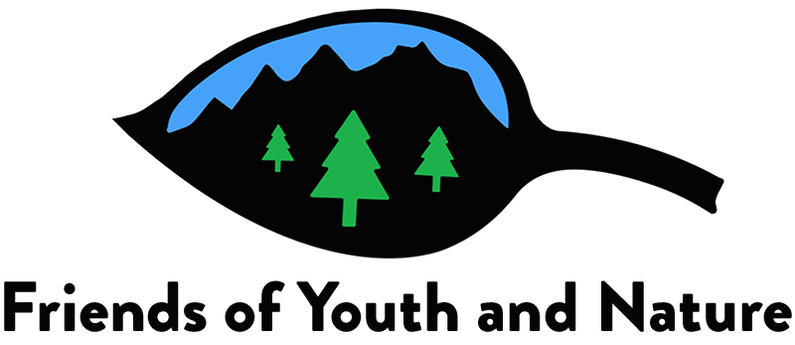|
Tips to help you connect your family to nature!
|
When most of us think of snow, we think of fluffy six-sided flakes collecting on our nose and eyelashes, snow families popping up on our lawns, and winter conditions arriving in the Colorado mountains. What you might not know is that our view of snow is limited by our language.
Other languages in the world have many more words for snow than the English language, primarily based on their culture’s relationship to snow. The Inuit culture has 50 words for snow, describing not only its shapes but also human interaction with the snow. Aput, for example, means “snow on the ground,” and qaniy means ``falling snow”. Piqsirpoq means drifting snow, as opposed to qimuqsuq, which means snowdrift. The Sami, indigenous people of northern Norway, Sweden, Finland, and Russia, have at least 180 words for snow and ice. For example, Skava is a thin layer of frozen snow; Vahca is loose or new snow; Moarri is the kind of frozen surface snow or ice that breaks and cuts the legs of animals; and Ciegar is a snowfield that has been trampled and dug up by reindeer. Internationally, avalanche experts have classified snowflakes into three basic snow shapes: column, plate, and the one we traditionally think of as a six-sided star—the stellar snowflake. Of course, there are many variations of these three basic classifications based on size and how they clump together as they form when drifting down through the atmosphere, but believe it or not snowflakes continue to change even after they reach the ground! Wind can tumble them across the surface of the snow, breaking off pieces of the flake. Even under the surface, snow continues to change as more snow builds into a thick snowpack. Snow and ice sublimate continually, turning directly into water vapor, and when this happens inside the snowpack that water vapor can refreeze onto other snowflakes within the snowpack, creating platelike sliding surfaces that create the avalanche conditions to which Colorado is so prone. Any 6th grader who has participated in a Knowledge Bowl competition can tell you that in the United States the state with the most recorded avalanches is Colorado. That is because the way our snowpack traditionally accumulates creates the perfect conditions for avalanches. With our mountainous terrain, we have many slopes of 35-50 degrees which are the most dangerous for avalanche conditions. Many winters, like this year, we get a significant snowfall early in the season, and then do not get more snow for several weeks. When this happens wind and sun can create a hard crust on the surface of the snow on which new snow can easily slide. In addition, the temperature difference from the surface of the snowpack to the base is often significant, with snow surface temperatures in the single digits while at the base of the snowpack the temperature is a constant 32 degrees. This temperature difference, or gradient, causes large plate crystals to form under the hard crust. These plate-like crystals are often called “sugar snow” and act like ball bearings. When the snowpack does get a significant addition of new snow on top, like we have experienced recently, one of two types of avalanches can occur on mountain slopes. A point, or loose, avalanche can slide on top of the hard crust underneath, or if there is enough weight with a new wet heavy snowfall the sugar snow underneath can collapse creating a dangerous slab avalanche. So, how can you safely play in the snow in Colorado? The Colorado Avalanche Information Center has a program called “Know Before You Go.” First, and most importantly, stay out of harm’s way. There are many safe places to recreate in the mountains, like on the generally flat top of Grand Mesa with groomed trails for cross-country skiing, snowshoeing, sledding, and snowmobiling. There are only a few easily avoided slopes where avalanches can occur. Bring water, healthy snacks like nuts and cheese, and extra clothing with you to make sure you will have everything you need for a fun day. A thermos of hot chocolate can warm you inside and out! Colorado also boasts many downhill ski areas, such as our local Powderhorn Ski area, where ski patrollers control the designated ski slopes for avalanches to keep patrons safe. If you do plan on recreating in Colorado’s backcountry where avalanche conditions are present, you need to be as prepared as possible before you head out the door by taking a free online Know Before You Go (KBYG) avalanche awareness class at kbyg.org. There are also many on site or classroom avalanche courses available that teach you how to recognize and avoid avalanche terrain, how to dig a pit and analyze the stability of the snowpack, what gear you should take with you in your backpack for safety, how the weather affects avalanche conditions, and how to look out for the safety of every person in your party. With just a little preparation, you and your family can have many hours of safe winter fun playing in a crystalline world on our public lands. Stay safe out there and have fun!
1 Comment
Cross Country Skiing? With kids? You bet! This fantastically fun activity is a life skill that can open doors for your family winter after winter. Here are a few tips to make your cross-country ski trips fun for the whole family.
The magic of cross-country skiing is that you can enjoy this activity no matter what your skill level. Beginners will experience the thrill of fresh snowflakes on their cheeks while they master the art of the diagonal stride—the basic method for moving forward down the tracks. More advanced skiers can work on perfecting their glide, coordinating their poles and skis, and learning how to move more quickly across the snow. We are very fortunate to have several areas on the Western Slope that provide excellent cross-country ski terrain close to home. If you do not already have cross-country ski gear, ski packages can be rented locally at several shops near you from experts who will help fit you with properly-sized skis, poles, and comfortable boots. Cross-country ski boots fit just like a hiking boot or tennis shoe—they are very comfortable and allow your foot to move in a natural motion with only the toe of your boot fastened to the ski. This allows for a natural walking motion as you move down the trail. These local shops have cross-country ski gear near you:
Be sure to ask them to show you how to attach and release your boots from your skis, and how to put your pole straps on your wrists. Once you have your gear, you will need to decide where to go. It is important to bring extra clothing and healthy snacks (see https://www.friendsofyouthandnature.org/bundle-up--for-winter-fun.html). Although you can have fun in the snow on any snow-covered hiking trail, for beginners it is more fun to learn on a groomed track. There are several volunteer organizations that groom cross-country ski trails for the public. Be sure to make a donation at the trailhead if you are able, to help these organizations with fuel and grooming costs—or better yet—become a member to ensure these services can continue to provide us with quality trails! Grand Mesa Nordic Council offers groomed trails on the Grand Mesa at three different trailheads. County Line trailhead, located at the Delta/Mesa county line on Grand Mesa is the most beginner friendly with short gentle trails that loop through the spruce and fir forest on Grand Mesa, Uncompahgre and Gunnison (GMUG) National Forest. The Black Canyon National Park outside of Montrose also grooms the snow-covered road just past the visitor center—be sure to call first to see if it has been recently groomed. Cerro Summit has trails groomed by the city of Montrose. There are also volunteer groomed trails on the Dave Wood Ski Trails west of Montrose, Top of the Pines outside of Ridgway, and Ironton, outside of Ouray. Once at the trailhead, you are ready to go! This may sound silly, but the most important first step in having fun while cross-country skiing is learning how to fall down and stand up. Learning how to stand up properly after a fall will make your whole day much more fun! The key is to untangle yourself (sometimes by putting your feet up in the air), put your skis next to you so they are parallel, scoot your body around to the front of your skis so your knees are on your skis and you could kiss the tips of your skis if you wanted to. Then put one knee up so you are kneeling on just one knee, and finally, stand up. If you are in the correct position you won’t even have to use your poles to help you, as you are using your leg strength. As you move down the trail, keep your knees slightly bent and bouncy. Practice bending your knees so you can touch your hands to the snow and you will ensure your feet are in the correct position—flat on your skis and stable. You start down the trail by ‘walking,’ using very short bouncy steps to get used to the glide, and keeping your nose over your toes. Then pretend you are running across the playground or soccer field using very short steps transferring your weight from one ski to the other. On the first flat stretch you have, take your poles off your wrists and ski using short running steps down the trail without your poles. This allows your body to trust your legs. As you get comfortable without poles, you can then add them in combination with your stride. Use your arm motion the same way you do when walking or running—opposite arm (pole) with your opposite leg (ski). As you get more and more comfortable with this motion, your body will naturally start to extend your stride on your skis and you will soon be gliding down the trail. Voila! You are now cross-country skiing using the basic motion called the diagonal stride. Many instructional videos can be found online for more information. As you learn to cross-country ski, a whole winter world will open up to you and your family. There are many other resources to help you get started. The Nature Connection out of Hotchkiss has scheduled several “pop-up” ski days (Jan 23, Feb 19, Feb 27, Feb 27) where they will offer basic lessons and cross-country ski gear free for youth and with a nominal charge for accompanying adults. You need to call to reserve your gear and get more information at 970-872-5910. Grand Valley Nordic Ski Club is offering cross-country ski lessons for youth ages 5-13 every weekend with experienced coaches on Grand Mesa starting on January 9 through March 6th. More information can be found at https://gvnsc.com/youth-programs and scholarships are available for those in need. The Grand Mesa Nordic Council offers individual and small group lessons. In addition to these three programs, Odin Recreation out of Mesa, CO is offering a program called “Odin Recreation Mountain Education” in cooperation with Powderhorn Ski Area. Contact Toby at [email protected] for more information about this exciting program. Wild winter fun on cross-country skis is the most natural movement you can do across the snow! There is nothing like it, and it will provide years of fun for your whole family. Yes − there are rangers that specialize in snow! Their jobs involve protecting the natural environment, evaluating snow conditions for avalanches and providing warnings of avalanche danger, monitoring snow accumulation to predict spring runoff, skiing/boarding down ski areas to make sure everyone is safe, protecting wildlife and their winter habitats from disturbance, and; search and rescue when people go missing. What does a job like this require? A keen interest and knowledge of earth science and a passion for winter and the outdoors are a must. Most snow rangers develop a love of winter at an early age and continue to build personal experiences in the outdoors eventually pursuing academic classes and other certifications. The key is developing a love for winter and the outdoors at an early age, and that is what the Junior Snow Ranger Program is all about.
Developed by the US Forest Service in 2012, the Junior Snow Ranger program is intended to inspire youth to embrace a relationship with the winter environment, and to become stewards of the land. The Junior Snow Ranger activity booklet is targeted for 4th and 5th graders, however, children and adults of all ages can take away something from the program. You can download the booklet by searching the web for “Junior Snow Ranger”, which takes you to a Forest Service webpage. When the booklet is completed, parents can mail in the certificate and your child will receive an official Junior Snow Ranger bandana, card and patch. The booklet is filled with activities that will help you and your child learn about the winter environment such as: how to become a snowflake sleuth, how to identify animal tracks in snow and how to observe what’s happening in their “hood.” There are plenty of things to observe in nature this time of year! Surprisingly you can spot quite a few critters that are very active in the winter months. These animals have strategies to help them survive cold temperatures and short days. You may observe a short- tailed weasel or a snowshoe hare whose coats have amazingly transformed from the dull browns of summer to pure white! They are now camouflaged to visually blend in with the snow in order to protect themselves from predators. Many animals add to their insulation this time of year with thicker fur, puffier feathers or extra layers of fat. These are just a few of the “cool” adaptations animals have in winter. Ever wonder how avalanches happen? The Junior Snow Ranger Booklet explains the science of snow and how strong snow layers on top of weak layers within the snowpack can be triggered to slide. The booklets even provides instructions on how to create your own avalanche. And you can meet Cutler, the avalanche rescue dog! People have been having fun in winter for years! Over 5,000 years ago people of Nordic and Asian cultures watched snowshoe hares and lynx easily travel across the snow with their huge feet. They figured a way to make their own snowshoes, and were then able to travel long distances across frozen landscapes. Give it a try and follow the directions in the booklet to make your own snowshoes similar to those that were once used in some Native American cultures. If there is enough snow- you and your friends can build a snow fort complete with your own artistic touches of snow sculptures or snow angels out front. Or, make frozen bubbles! There are lots of other ideas and games in the booklet to get you acquainted with the winter environment. Want to know how much snow is in your backyard? Or how much water will result when the snow eventually melts? Scientist call this “snow-water equivalency” and you can figure it out with a yardstick, a measuring cup and of course, a little math! Safety in the outdoors is important all the time, but in winter, it is imperative! To become a Junior Snow Ranger you need to know a few important concepts such as: “dressing like an onion” in layers (base, middle and outer layer); go exploring with a buddy, never alone (an adult is a good companion); stay on marked trails and designated areas and always pay attention to signs and instructions; pace yourself – don’t go too fast, and figure out when you need to turn around to get back; go with someone that knows first aid and can identify hypothermia and hypoglycemia (low blood sugar); and make sure you have the “10 essentials” for your pack ( outwear, drinking water, map/compass, pocketknife, sunscreen, duct tape, whistle, headlamp, and a space blanket). And, remember to “hug a tree” if you feel like you are lost. Staying near a tree offers some protection from the elements, and keeps lost children in the same place, which makes it easier for searchers to find them. A winter outing can be a great time to try a new challenge like walking with snowshoes or cross-country skiing. There are several places where you can rent snowshoes or cross-country skis in Montrose, Cedaredge, Grand Junction, Hotchkiss, Ridgway, Telluride and Ouray. Odin Recreation at the entrance to Powderhorn has ski rental and offers instruction. Visit the “Need Gear?” section the FOYAN website (friendsofyouthandnature.org) for a list of gear providers in Montrose, Mesa, Delta, Ouray and San Miguel Counties. Ridgway State Park has snowshoes that can be used within the park. It is best to call ahead for availability and to reserve rentals under Covid-19 protocols. And if your children become hooked on growing up to be a snow ranger, track down and interview one. Lucky for us, the Grand Mesa, Uncompahgre Gunnison National Forest has several on staff! This may be just the endeavor to spark a life- long enthusiasm for winter in your child, and may lead to a future snow ranger caring for our public lands. Like the pages of a book telling a story, the tracks, trails and impressions in the snow reveal the activities of animals in your neighborhood. Each type of animal has unique tracks which reveal a lot about their lifestyles and habits.
By discovering tracks, scat, and other signs of wildlife in snow, you can turn a winter hike into a treasure hunt for your child. Select a snowy area where you are likely to find an assortment of animal tracks, and keep the hikes short and leisurely. Fresh snow early in the morning is best, before tracks melt away. Imagination is key! Animal tracking combines science, creativity, and storytelling. You won’t see the animal itself but the tracks they leave behind are pieces of the puzzle for you to solve. What kind of animal made the track, and what was it doing? Where did they come from, and where were they going? Prompt your child’s curiosity and help sharpen their observation skills. To identify a track start by counting the toes. If it has two toes, it’s probably a deer, elk or moose. If it has four toes and a heel pad, it could be a bobcat, lynx, or mountain lion; it could also be a canine like a fox, coyote, or dog. The easiest way to tell a cat from a dog track is the presence of nails. Cat’s toenails are critical for catching prey so they keep them retracted for protection when not in use. Most canine tracks, on the other hand, have visible nail marks above their pads. Five toes? It could be a raccoon, or another animal that uses its paws like hands. Next, take a good look at the size and how deep the tracks are in the snow. A mouse is smaller than a squirrel. A smaller and lighter animal will leave a shallower impression. Show your child how much deeper your tracks are compared to theirs. Among the big cats, a bobcat track is smaller (and likely more shallow) than that of a lynx or a mountain lion, with the mountain lions’ being the biggest print − almost the size of an adult fist. Lynx tracks can be distinctive because their tracks have hair impressions around the pads. Dog and coyote tracks look similar, but coyote tracks are narrow and diamond shaped while dog tracks are rounder with more space between the pads. Fox tracks are shaped like a coyote but much smaller. Another clue is the animals stride or the repeating pattern of their prints in the snow. Animals walk in four basic patterns: walking, galloping, bounding and pacing or waddling. Those patterns are influenced by the length of an animals legs and their overall body shape. A walking pattern is characteristic of animals with long legs like a cat, dog, coyote, deer or elk. These animals are very efficient and will often place their back foot on top of where their front foot was. Their stride pattern is a series of single prints generally in a straight line. Squirrels, chipmunks, mice, rabbits and snowshoe hare are gallopers because they leap from one location to another. Rabbits and squirrels are similar in that their larger hind paws land in front of the smaller front paws, making four distinct prints per track− two parallel long prints in front of two small round prints. Tracks of snowshoe hare are similar to rabbits but much larger. Look for the round toe impressions of rabbits compared with the long finger marks of squirrels. Bounders are animals that have a bounding stride like weasels, mink and otters. Their front paws hit first and then their back paws land where their front paws were. Their tracks appear as two paws that fall side-by-side. Weasels often drag their tails, leaving a central furrow. Pacers or waddlers are short–legged, heavy-set mammals (beavers, porcupines, raccoons, skunk, and bears) that have a distinctive track with four paw prints. They waddle, shifting their weight to the right so their left front/back paws can move forward, then shift their weight to the left so their right front/rear paws can move forward. You can’t miss a bear track – its paws are huge with five rounded toes and a wide heel pad. Don’t forget bird tracks. You can usually only see their footprints, but sometimes you can see the wing marks where one landed. Take a look at the bigger picture surrounding a set of tracks. Look at the direction of the tracks, and where they end up. A good tracker will be on the lookout for other clues such as blood and/or wing marks indicating maybe a hawk caught something, a spot where an animal burrowed, seeds of a pine cone scattered about (squirrel lunch), or yellow snow− animals pee too! If you want to expand your identification skills, there are apps to help you such as iTrack Wildlife Apps by Nature Tracking. All are easy to use, contain high resolution photos with detailed information and work offline. Remember to be safe. If you spot the actual animal, give it space and an escape route. Always observe from a distance. If you are causing a change in their behavior, you are too close! Whatever tracks you and your child find are clues to an awesome winter treasure hunt, and will spark wonder and discoveries about the animals in your neck of the woods! Who among us hasn’t learned the hard way that, when adventuring outside in winter, preparation is worth its weight in gold. Whether you’re suffering a highway shut down or a snap storm that puts you on the side of the road while on a car trip or you’re suffering from cold and wet blue jeans and boots while sledding on a local hillside; cold weather can be miserable. My husband remembers as a child having his dad cut up bicycle inner tubes to tie around the tops of his irrigating boots so his feet would remain dry—it did nothing to alleviate the unforgettable cold and the freezing feeling.
We want children to remember the fun of sledding, skiing, snowman building, the discovery of winter animal tracks, and the joy of successful snow angels and snow forts. The key to remain warm and dry in the midst of wet, cold snow is being prepared. Here are a few tips to keep in mind for cold-weather comfort:
Aside from clothing choices, you should always bring snacks and water. My grandkids now remind me every time we have an outing “DON’T FORGET THE SNACKS” because you guessed it—I have forgotten them. Generally think about carbohydrates that provide quick energy and quick recovery. Kid friendly food bars make this easy, but also a nut or nut free butter and jelly sandwich is perfect. Dried fruit provides quick energy and is healthy too. Water is important. Given the length of time that most kids actually spend playing outdoors in winter it’s okay if they drink water before and after the activity instead of during all the fun. To help increase the quantity you could have a warm thermos of hot cocoa, tea, or soup. Any fluids will help replenish their active selves. Stuck in the car on the side of the road, or waiting for a road closure to reopen? Tuck all the above in the car before you take off, and include a pack of cards or drawing paper and pencil. Electronics are the entertainment du jour but they may be short lived or out of range in the event of a road closure. There are many interactive games that don’t require electronics. Remember “hang man” and designing your own mazes on paper? How about writing haikus (3 line Japanese style poems) starting with a description of the view out their window. In western Colorado, we have an abundance of sunshine and with a little bit of driving to the Uncompahgre Plateau, the Black Canyon of the Gunnison National Park, or the Grand Mesa National Forest, we also have an abundance of snow. The combination invites adventure and fun—so grab your sunscreen, snacks, and the right warm clothing and get out there! For more winter-specific and general outdoor activities with kids, visit www.friendsofyouthandnature.org For more fun snow play ideas, search “ snow activities for kids”, or check out these links: https://www.parents.com/fun/activities/outdoor/snow-activities-kids/ https://www.howweelearn.com/fun-things-to-do-in-the-snow/ https://artfulparent.com/winter-activities-for-kids/ |
Blogs for Summer! DIY Summer Camps A Summer backyard Bucket List Hiking with Children 101 Kids, Dogs and Hikes a Winning Combination Getting Outdoors is Easier than You Think Categories
All
Archive
Archives
July 2024
|

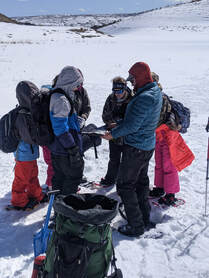
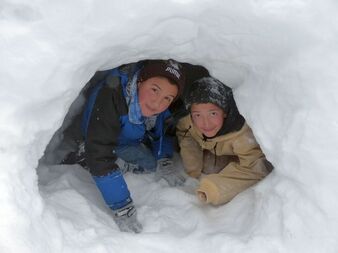
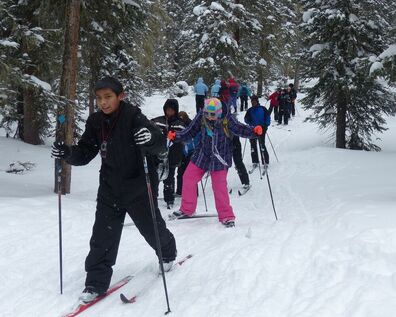

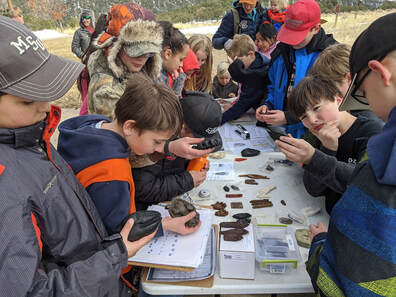
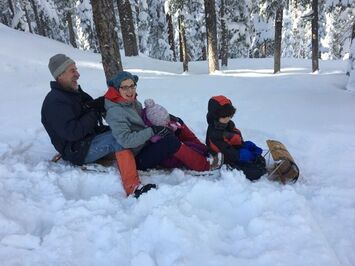

 RSS Feed
RSS Feed


